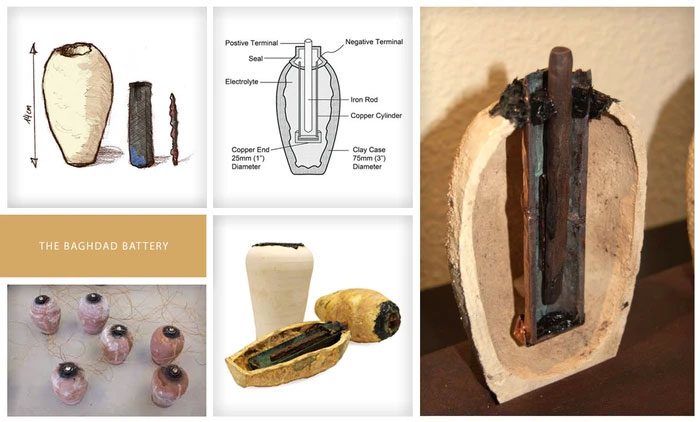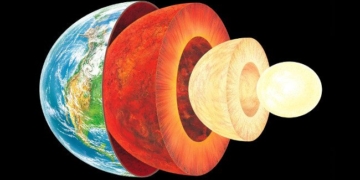The Earth has existed for 4.5 billion years and has undergone a long process of development. Throughout this period, the Earth’s environment has experienced many changes, including five mass extinctions.
Each occurrence of mass extinction has had a significant impact on the ecological environment of Earth, and almost all living organisms have faced the threat of extinction. However, the Earth has not been destroyed because of this; instead, after a long process of evolution, it has managed to recover a vibrant scene.
Some scientists speculate that life on Earth is a phenomenon of repeated regeneration, suggesting that life on Earth will never truly become extinct.
With the continuous development of Earth, some extinct species may reappear through random evolution. Therefore, some scientists believe that before humans emerged, there may have been other advanced organisms on Earth, and we are not the only advanced life forms on this planet.
Why do they say this? The main reason is that many traces of prehistoric civilizations have been found on Earth. These traces seem to serve as evidence of prehistoric civilizations.
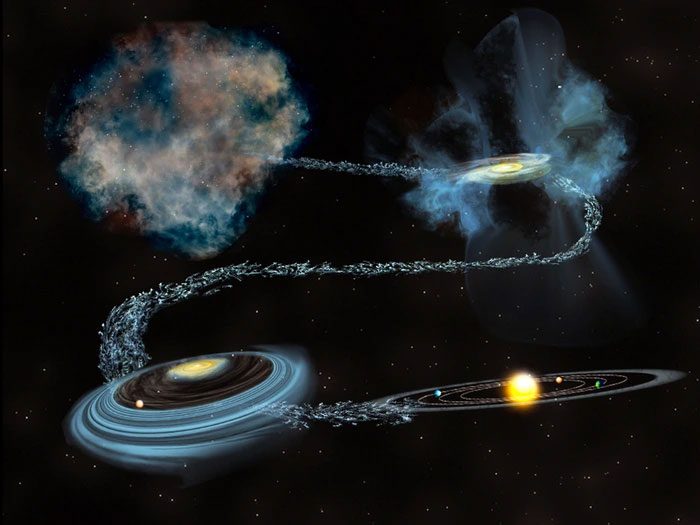
The Earth has existed for 4.5 billion years and has undergone a long process of development. Throughout this period, the Earth’s environment has experienced many changes, including five mass extinctions.
In June 1936, a group of workers constructing a railway outside Baghdad, the capital of Iraq, were drawn to a massive stone inscribed with ancient Persian characters.
The workers were astonished and decided to dig deeper to see what it was. Their efforts were not in vain, as they uncovered a gigantic ancient tomb made from over a hundred stone slabs.
This discovery immediately attracted the attention of archaeologists from the Iraq Museum. They rushed to the site and began excavation work. After arduous efforts, the archaeologists found numerous valuable cultural artifacts after more than two months. Notably, when they opened the coffin, they discovered a large number of artifacts inside, dating from the Persian dynasty, around 248 BC to 226 BC.
The jars are believed to date back to the Parthian period (the third dynasty of Iran, ruling from about 248 BC to 226 BC) and include a clay vessel with a bitumen cap. Through the cap, there is an iron rod. Inside the jar, the iron rod is surrounded by a copper cylinder. Konig believed that these looked like electric batteries and published a paper on the subject in 1940.
However, in these unexpected discoveries, German archaeologist Wilhelm Konig found something even more remarkable – a number of tools and devices with peculiar structures and connections – including some unique ceramic jars, copper tubes, and corroded iron rods.
They seemed to fit together and formed a special device. Konig took these artifacts back to Germany for restoration and realized that these were indeed battery units. Months later, Konig made a startling announcement in Berlin.
He declared that ancient peoples were capable of connecting these batteries in series to increase energy, and Konig also believed they were created for decorative purposes and to make gold-plated metal sculptures.
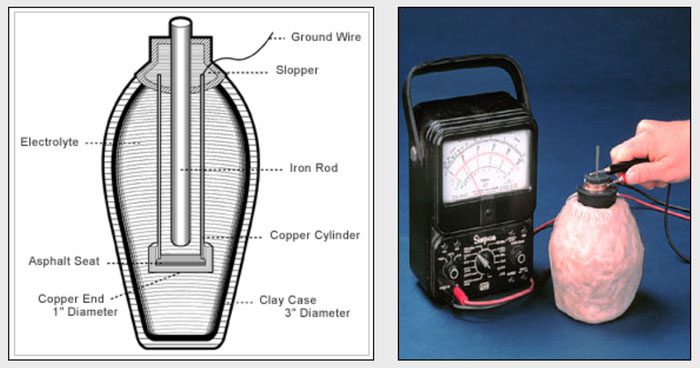
Did ancient people have the ability to connect these batteries in series to increase energy?
Not all scientists accept that this artifact is indeed an ancient battery. However, if they are batteries, then who made them and what were they used for?
This news sparked widespread interest and lively discussions within the scientific community. If these discoveries are indeed ancient batteries, they could revolutionize our understanding of the technological level of ancient peoples. They suggest that thousands of years ago, ancient civilizations had the ability to use electricity and made breakthroughs in technology in certain fields.
In the 1950s, archaeologists discovered a mysterious stone slab in the ruins of the Maya, but it did not attract much attention at that time. It wasn’t until the 1960s, when humans first ventured into space, that the stone slab began to garner interest.
The patterns engraved on the stone appeared to depict a human-controlled aircraft. The patterns on the slab are very clear, showing the air intake, exhaust pipes, and control sticks of the aircraft. The stone also depicts a person with an oxygen device in his nose, controlling a spacecraft by hand, as if he were sitting atop something resembling a rocket, traveling through space. However, what astonished people even more was that the historical dating of this stone slab traces back 4,500 years, during the time of the ancient Maya civilization, leaving many perplexed and amazed.
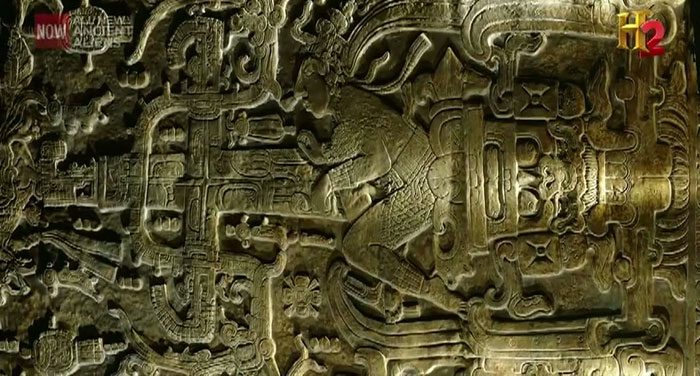
In 1952, a stone slab depicting a human was excavated from the ruins of a Maya temple. At that time, people thought the carvings were merely mythological stories of the ancient Maya.
Because at that time, humans had not invented any devices related to space travel. So why would the ancient Maya depict something resembling a spacecraft on the stone slab? Some speculate that an ancient extraterrestrial civilization may have visited this tropical rainforest, and the ancient Maya, having only seen something resembling a spaceship, carved it onto the slab.
If the “spaceship” on the slab truly belongs to extraterrestrials, then why does it resemble modern spacecraft? Regardless of the explanation, this mysterious stone slab has sparked widespread interest and discussion. It compels us to reconsider the advanced technology that may have existed in ancient civilizations.
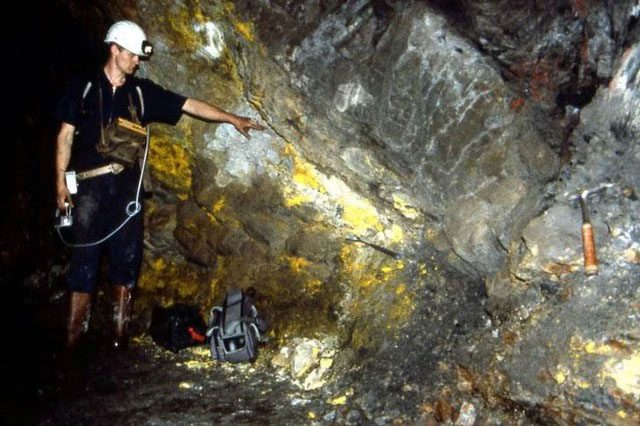
A uranium sample from the Oklo mine lost about 0.003% of the uranium-235, the most valuable isotope among the three types of isotopes in natural uranium. The three types of isotopes are uranium-238 (99.2739-99.2752% of the natural isotopes), uranium-235 (0.7198-0.7202%), and uranium-234 (0.0050-0.0059%), with uranium-235 having the potential to produce immense energy. The 0.003% loss is very small, but based on the size of these uranium deposits, the total amount of uranium-235 lost exceeds 200 kg.
Moreover, on June 2, 1972, a doctor named Bouzguet, performing analysis at a nuclear fuel processing plant in France, accidentally discovered an unusual phenomenon: Uranium from the uranium mine near the Oklo River (in Gabon, a former French colony in West Africa) had an unusual ratio of the two isotopes, uranium-235 and uranium-238.
This discovery immediately shocked the world and attracted scientists from around the globe to Oklo for in-depth research. After a series of studies and analyses, scientists reached an astonishing conclusion: there is an ancient nuclear reactor near Oklo.
What surprised scientists the most is that the waste from this ancient nuclear reactor did not disperse into the surrounding environment but was concentrated within the mining area. This means that this reactor had very advanced nuclear waste treatment technology, capable of effectively controlling and limiting waste dispersion, preventing it from affecting the surrounding ecological environment.
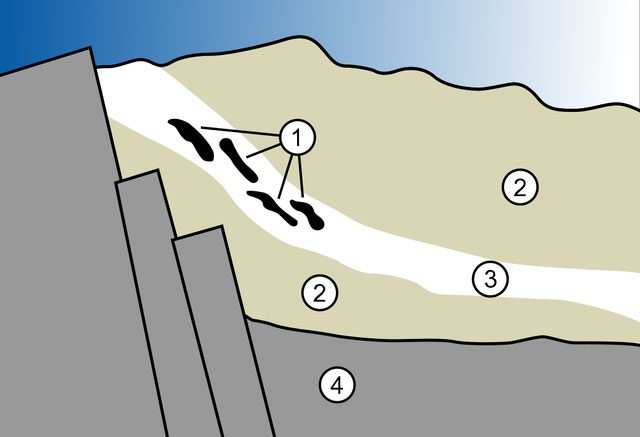
The nuclear reaction areas (1) were created by honeycomb structures (2), with water flowing through these channels (3) on a solid granite base (4).
This discovery has prompted scientists to seriously consider the possibility of prehistoric civilizations’ existence. Based on these undeniable facts, some scholars have proposed theories about prehistoric civilization, suggesting that human development may not be as previously imagined but occurs in cycles.
So, what destroyed prehistoric civilizations? Many scientists believe that the destruction was caused by periodic natural disasters, while others think that it was the result of extraterrestrial forces.
- A “screw” from 300 million years ago embedded in a stone reveals the peak of prehistoric times?
- Why doesn’t science acknowledge evidence of advanced prehistoric civilizations?
- Is the mysterious disk at the bottom of the Baltic Sea a product of prehistoric civilization or an extraterrestrial spacecraft?








































